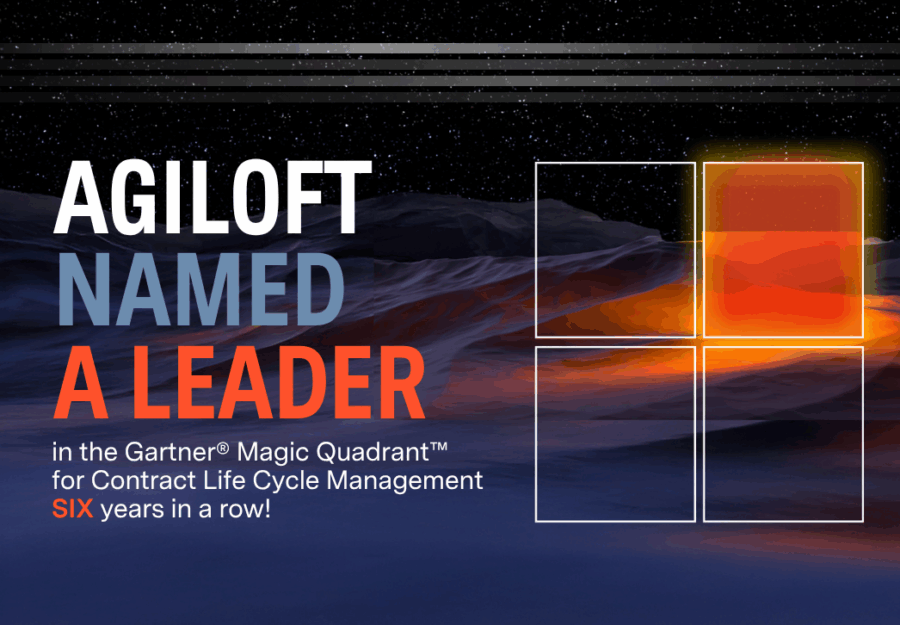
Overcoming supply chain issues in 2025: SCM solutions
It’s essential to cut costs and adapt inefficient processes. The right solution can help reduce risk, too. But how?

While the acute supply chain disruptions triggered by the pandemic have gradually receded, the landscape remains complex, volatile, and deeply interconnected. Businesses now operate in an environment shaped by unpredictable geopolitical tensions, rising costs, and rapid digital transformation. Despite these realities, customer expectations for faster, more transparent, and more sustainable service have grown.
To navigate this reality, organizations ought to rethink how they manage risk and growth across their supply chains. Flexible, scalable Supply Chain Management (SCM) solutions such as Contract Lifecycle Management (CLM) software and Enterprise Resource Planning (ERP) systems are fast becoming essential infrastructure for streamlining operations, improving compliance, and mitigating risk.
The scope of supply chain issues in 2025
Five years after the pandemic forced businesses to reimagine SCM almost overnight, the aftershocks continue. Organizations face challenges from internal and external sources:
- Internal threats: Internal issues such as obsolete technology and poor demand forecasting often stem from operational blind spots that hinder agility.
- External shocks: Challenges such as natural disasters and political unrest are harder to predict, yet increasingly frequent.
As supply chains grow more intricate, so do the consequences of failure. Delays, shortages, and inefficiencies now ripple quickly across global networks, impacting revenue, compliance, and customer trust.
Key supply chain industry challenges
Several core external and internal challenges continue to test the limits of even the most experienced supply chain leaders across sectors:
Labor shortages
A persistent shortage of skilled labor, particularly in sectors like trucking, warehousing, and manufacturing continues to affect businesses’ ability to meet demand. Automation and Artificial Intelligence (AI) platforms offer relief, but gaps in staffing still strain capacity, delay fulfillment, and raise labor costs.
Geopolitical instability
Conflicts, trade wars, sanctions, and shifting trade policies continue to disrupt the global flow of goods and raw materials. Companies that rely on overseas suppliers need to decide if cheaper prices are worth the risk of sudden disruptions to their supply chain.
Rising costs
Rising transportation costs, higher raw material prices, and the ongoing shortage of goods have all contributed to increasing supply chain costs. Businesses are forced to either absorb the higher expenses or pass them on to consumers, impacting their competitive edge and customer satisfaction.
Technological gaps
Many organizations still rely on legacy tools and fragmented systems that fail to match the speed or complexity of modern supply chains. This is despite the growing availability of advanced SCM solutions such as Machine Learning (ML), AI, ERP, and CLM platforms. The absence of real-time data, predictive analytics, and automated systems creates significant inefficiencies, leading to errors, delays, and missed opportunities for optimization.
Common causes of supply chain difficulties
As businesses attempt to adapt to the continuously changing supply chain landscape, understanding the main causes of disruptions is essential.
Internal inefficiencies
Disconnected workflows, outdated spreadsheets, inaccurate forecasting models, manual processes, and siloed databases are a few examples of internal inefficiencies that delay decision-making and lead to costly errors. Without automation, businesses might miss deadlines, have excessive inventory, and lack coordination between departments.
External risks
External factors such as natural disasters, cyber threats, and regulatory shifts continue to pose significant risks to the stability of global supply chains. Events like hurricanes, wildfires, and geopolitical tensions can shut down key suppliers or disrupt transportation routes, leaving businesses scrambling to mitigate the damage.
Lack of supply chain visibility
Many companies still struggle to gain real-time insight into their supply chain operations. Without end-to-end visibility, it becomes difficult to identify bottlenecks, assess risk exposure, or anticipate shifts in supply or demand. Poor visibility is particularly problematic when managing complex supply chains with numerous external partners, each with their own systems and data formats. It limits coordination, delays response times, and erodes stakeholder confidence.
Addressing SCM challenges with advanced solutions
Modern supply chains need intelligent infrastructure that aligns data, people, and processes across the enterprise to address core SCM challenges with greater speed, precision, and control.
Contract lifecycle management
Contract accuracy is non-negotiable, especially when supply chain operations hinge on agreements with hundreds or thousands of suppliers and service providers. CLM platforms automate the contract process, improving compliance, reducing errors, and streamlining contract creation, negotiation, and approval. By centralizing all contract data, businesses can mitigate risks associated with missed deadlines, unauthorized changes, or overlooked terms, ensuring smoother operations across the supply chain.
ERP systems
ERP platforms connect purchasing, inventory, logistics, and financial data across an organization. Through real-time data updates, ERP systems help forecast demand more accurately, track inventory levels, and streamline production schedules, reducing inefficiencies and delays. These tools can also automate purchasing decisions based on live data, ensuring that businesses never over-order or under-order stock, thus avoiding shortages and excess inventory.
Data and analytics
Predictive analytics and scenario modeling have become indispensable for supply chain resilience. These tools allow businesses to assess future risks, forecast demand, and optimize routes. By leveraging ML algorithms, companies can identify patterns and trends that traditional methods would miss, leading to more informed and proactive decision-making.
For instance, organizations can analyze real-time data on weather conditions, supplier status, and demand trends to anticipate disruptions or delays. Predictive models can also be used to evaluate alternative sourcing strategies and transportation routes to minimize the impact of unforeseen events.
Strategies for tackling supply chain disruptions
Businesses need to adopt strategies to fortify their supply chains against future disruptions. These approaches help organizations reduce exposure, increase flexibility, and build lasting resilience:
- Diversifying suppliers: Relying on a single supplier or region for critical components or raw materials increases vulnerability. Expanding the supplier base — especially with domestic or nearshore options — helps mitigate risk and maintain continuity when global events disrupt supply routes.
- Building resilient networks: Building a resilient supply chain requires flexible networks capable of adapting to unexpected events. This includes building relationships with suppliers and partners that prioritize agility and responsiveness, establishing alternate transportation options, and maintaining contingency inventory plans.
- Implementing automation: By integrating automation tools across the supply chain, businesses can eliminate bottlenecks, reduce human error, and maintain a steady flow of goods. Automated data collection, order processing, contract execution, and inventory management help businesses avoid potential disruptions, reduce the time spent on manual tasks, and identify and address issues swiftly.
The future of supply chain management: Trends and innovations
Looking ahead, digital transformation and sustainability will continue to reshape supply chains. Organizations that lead this evolution will enjoy a competitive advantage.
AI and IoT integration
Integrating AI and Internet of Things (IoT) technologies into supply chains is transforming decision-making and operations. AI-powered tools offer predictive analytics that help businesses forecast demand, optimize routes, and identify potential disruptions before they occur. IoT devices, such as connected sensors and Radio Frequency Identification (RFID) tags, enable live monitoring of shipments, equipment, and inventory, providing businesses with valuable data they can use to optimize operations.
Sustainability trends
Amid growing concerns about environmental impact and increasing regulatory pressure, businesses are focused on reducing their carbon footprint throughout their supply chains. Technologies like AI and advanced analytics are playing a key role in achieving sustainability goals. From optimizing transportation routes to reducing waste in production processes, these tools enable businesses to maintain efficiency while meeting their environmental goals.
Agility in supply chains
In a market characterized by uncertainty, agility means stability. Businesses ought to develop flexible supply chain strategies that can respond to disruptions, shifting consumer demand, and global market volatility. Integrating advanced tools like AI, ML, ERP, and CLM systems helps organizations maintain visibility and control, enables leaders to make strategic decisions, and maintains cross-functional coordination.
Prepare for tomorrow’s disruptions today
The global supply chain is no longer just a logistical backbone — it’s a strategic differentiator. Organizations facing persistent supply chain issues need to evolve beyond spreadsheets and static workflows. By adopting integrated CLM and ERP platforms, leveraging advanced technologies such as AI and ML, and embracing proactive SCM strategies, organizations can create resilient supply chains ready for tomorrow’s disruptions.
Contact Agiloft to explore solutions to future‑proof your supply chain.
Recent
Posts
Discover why Agiloft has been named a Leader in the Gartner® Magic Quadrant™ for Contract Life Cycle Management for the sixth year in a row.
Explore five contract negotiation strategies to reduce risk, create value, and close better deals with the power of AI-enhanced CLM.
Discover four practical ways AI is transforming contract management by boosting efficiency, reducing risk, and unlocking contract data.






